"Russian Verdun". Carpathian 1915 operation. Part of 2. Defeat of E. Ludendorff
March 9, without waiting for salvation, fell Przemysl (more than 123 thousand prisoners, including 9 generals, and 1 thousand guns, became trophies of the South-Western Front). March 11 The 24 Corps captured the main Beskid ridge.
In the battle on the Lubensky Heights 16 - 19, the Austrian 2 Army was defeated in March, and the 3 Army and German corps G. counterattack was repulsed.
On March 30, the Carpathians were forced.
During the March battles, the South German army and the Beskyd corps were defeated as a result of the actions of the 8 army and the left group of the 3 army. The words of the Austrian General K. Novak testify to the defeat of the Austro-Germans: “The Carpathian passages — Uzhloksky Perval, Dukla — found themselves in Russian hands” (Nowak KF Der Weg zur Katastrophe. Berlin, 1919. S. 76.).
It is worth noting the significant superiority in the Carpathian battles of the Austro-Germans over the Russians in terms of numbers and materiality. Thus, in January, 1915, 41,5, the Austro-German infantry and 8 cavalry divisions of the Pflanzer-Baltin army group, the South German, Austrian 3 and 4 armies opposed the 31 infantry and 11 cavalry forces.Reichsarchiv. Der Weltkrieg 1914 - 1918. Bd 7. S. 89.). At the end of March, 30 infantry (of which 9 was German) and 1 cavalry (German Marshal) enemy divisions in the Austrian 3 and 5 armies, the German Southern Army, and the Beskyd corps were opposed by Russian 8 and 9-ya my army, the South Southern army, the Beskid corps were opposed by the Russian 7 and 22-ya my army, the Southern Southern army, the Beskid corps were opposed by the Russian 23,5 and 7-ya forces of the yay army of the South of Germany. individual corps (XNUMX and XNUMX army) - XNUMX infantry and XNUMX cavalry divisions (Borisov A.D. Decree. cit. C. 105.). In addition, Russian troops were distinguished by a shortage of personnel and a lack of ammunition.
The highest generals of the Austrian army during the period of the Carpathian operation. They sit at the table (facing the reader and from left to right): Chief of the Field General Staff, General of the Infantry, Count Franz Conrad von Gettsendorf, Commander-in-Chief of the Austro-Hungarian Army, Field Marshal Ertsholz Erdoll, Commander of the 2 Army, General of the Cavalry E. Bemoll
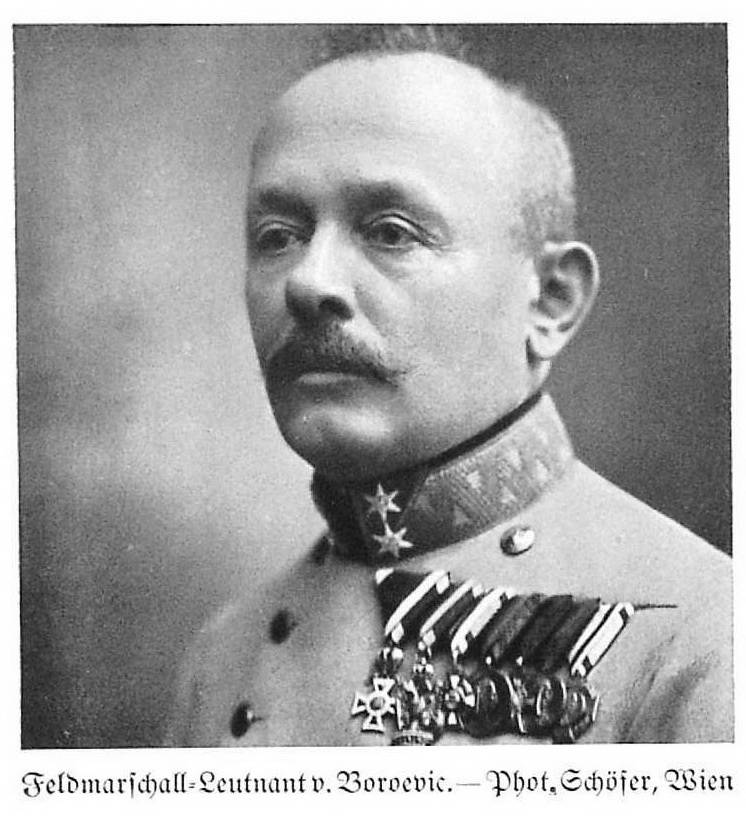
Austrian 3 Army Commander General of the Infantry S. Boroevich von Boin (pictured as Field Marshal Lieutenant)
Of particular interest are the results of the operation.
The Carpathian operation was of paramount operational and strategic importance. This operation is another proof of the ability of the Russian army to win oncoming battles, but in this case, even in difficult climatic conditions with the beginning of the supply and armament crisis. The Russians entered the Hungarian plain, putting the German block on the brink of defeat.
episode of the Carpathian battle
Austro-Germans could not break through the Russian front. Peremyshl fell, and as a result, the Russian Blockade army was liberated.
On the Austrian front, the German troops could neither reverse the course of events in favor of the German bloc, nor reanimate the capacity of the Austrian ally. As the Austrian historian V. Rauscher writes: “In the Carpathians, for the first time, a mixed army was formed consisting of German and Kaiser and royal formations ... under the command of General Alexander von Linsingen. Technically, he was given Ludendorff as Chief of Staff ”(Rauscher V. Hindenburg. Field Marshal and Reich President. M., 2003. C. 71.). Accordingly, the failures of the German-Austrians in the Carpathians are also the defeat of the “invincible” E. Ludendorff.
South German army A. von Linsingen in the Carpathians
parts of the German 2 of the Bavarian reserve corps of the General of the infantry F. Count von Botmer in the Carpathians, Zvinin mountain range
Austrian 305-mm howitzer in the Carpathians
The entry of Germany’s supposed Balkan allies into the war was in question. The plan to reach out to Russian forces in Poland through concerted actions by Austro-Germans failed.
General E. Falkengine assessed the completion of the Carpathian operation not only as the last point in the combat elasticity of the Austrian ally and his impending demise, but also as the last link in the collapse of the "Winter Strategic Cannes" aimed at covering the flanks of the Russian front. He wrote that it was very desirable to liberate the Allied-Austrian front for a long time from the pressure of the Russians. But there was little chance. In the Carpathians, not counting the additional Austrian forces, four German corps were isolated (Falkengayn E. Decree. cit. C. 59.). The catastrophe associated with the fall of Hungary would have been fatal - it was necessary to move on to the immediate and immediate support of the Carpathian Front. The latter had already swallowed the German forces assigned to the operation at Pilica required additional forces - because after the fall of Peremyshl, an “irreparable breakthrough into Hungary” followed (Ibid. C. 62.).
The Austrian offensive in the Carpathians, in which the Southern Army, commanded by infantry general von Linsingen, took part as part of the German 3 and several Austrian divisions, stalled after minimal progress. It was not even possible to completely liberate Hungarian territory from the Russians, and even more so it was impossible to count on the Peremyshl’s de-blockade or “some other crushing success” (Ibid. C. 64). The general stated the collapse of the "Winter Strategic Cannes", noting that operations against the flanks of the Russian front did not meet such serious expectations. But the troops deployed for this strategic operation remained on the Russian front (Ibid. C. 66).
In this testimony of the Germanic Glavkoverha - the merit of the Carpathian operation as before other sectors of the Russian front, and before the front of the allies on the Entente.
episodes of the war in the Carpathians
The Russian operations of 1915, which overwhelmed the enemy’s “Winter Strategic Cannes” (the Second Prasnyshskaya and Carpathian operations) and the preparations for the Gorlitsky operation, led to a reinforced transfer of German-Austrian troops to the Russian front.
In March, 1915 German 5 (19-i and 20-i-roo), infantry and 11-cavalier (Guards, 82-i-roo) and cavalry 81 (guards, cavalry (3) . All but the 3 of Bavarian (transferred from Germany) arrived from the French front.
By March, the Austro-Hungarians increased their grouping into 3 divisions on the Russian front. Spring 1915 - peak (up to 50 divisions, counting with individual brigades) of the number of Austrian troops on the Russian front. The transfers bared the Austrian Balkan front, as evidenced by Admiral O. R. Wulf, who reported that the Austro-Hungarian command had transferred the 14th, 15th and Consolidated Corps to the Carpathians in the winter of 8/13, leaving only a land assault and the Danube against Serbia flotilla (Wolf, O. R. Austro-Hungarian Danube Flotilla in World War 1914-1918. SPb., 2004. C. 19.). E. Falkengine writes about this, noting that for Serbia not only the Austro-Hungarian troops could not be removed from the Carpathian front, but on the contrary, they had to transfer troops from the Danube to the Carpathians (Falkengayn E. Decree. cit. C. 62.).
By the end of the battle for the Carpathians, the 5 of the Austro-Hungarian armies and the 5 of the German corps operated against the South-Western Front.
Opponents suffered heavy losses.
Thanks largely to this battle, the number of Germans in Russian captivity increased from about 15 thousand people by the end of November 1914 to almost 50 thousand people by February 1915, and the Austrians for the same time from about 200 thousand to more than 360 thousand people [RGVIA. F. 2003. Op. 2. D. 426; Reichsarchiv. Der Weltkrieg 1914 - 1918. Bd 6. Ii. Berlin, 1929. S. 367.].
In total, the Austro-Germans for the entire period of the Carpathian battles (including the autumn and winter of 1914) lost up to 800000 people [Österreich-Ungarns Letzter Krieg 1914 -1918. Bd. Ii. Wien, 1931. S. 270.], including 150 thousand prisoners.
Reports from the Southwestern Front about trophies confirm this figure. So, only in the 20 period. 02. - 19. 03. 1915 Russian trophies were up to 59 thousand prisoners, 21 gun, about 200 machine guns [Ivanov FK The Great War. M., 1915. CH 2. C. 205-206.]. 6 - March 30 Russians captured 70 thousand prisoners, more 30 guns and 200 machine guns [Military collection. 1915. No. 5. C. 225 .; The Great World War. Ibid. P. 58.].
The following facts testify to the tremendous cost of the Carpathian front for Austria-Hungary and Germany:
1) story Carpathian battles are full of cases when entire units were captured who found themselves in a hopeless situation in the midst of a mountain war. For example, the 21 March, the 28 th Prague Infantry Regiment surrendered (1,1 thousand of lower ranks and 21 officer).
2) The enemy's frontal attacks on mountain heights resulted in extremely high losses. For example, the losses of the Austrians in the area of the famous Kozyuvka (the height of 992) during the month of 2 fighting approached 30 thousand people. The German Southern Army lost only 2 weeks (February 26 - 10 March) to thousands of soldiers lost to 7, and the Russian Front veteran and one of the best Kaiser units - the German 1 Infantry Division lost 3 months (January - March) man, that is, changed the composition.
In the period January - April 1915, during the Battle of the Carpathians, Russian trophies became up to 60 guns, up to 460 machine guns, 8 flamethrowers (all flamethrowers were taken on Makuvka mountain of 21 April) enemy [Oleynikov A.V. Captured in battle. Trophies of the Russian army in the First World War. M .: Veche, 2015. C. 316].
Describing the damage during the implementation of the "Winter Cannes" E. Falkenhayn noted the huge losses of opponents (Falkenhayn E. f. Decree. cit. C. 66.).
The Austrians estimated the losses of the German bloc in the Carpathian Battle (without taking into account the garrison of Przemysl) to be approximately 600-800 thousand people, and the Russian losses were the same (Wagner A. Der Erste Weltkrieg. Wien, 1993. S. 91.).
Historians D. Keegan and N. Stone considered only Austrian losses and only for the first 3 of the month 1915 were equal to 800000 people (Keegan D. The First World War. M., 2004. C. 217; Stone N. The First World War. M., 2009. C. 98.).
The British official publication noted that Austrians lost 1 to 3 every day in the Carpathians, while March losses outnumbered thousands in 100 (The Great World War. A history. General Editor Frank A. Mumby. Volume 3. London, 1917. P. 50.) (in one week from 7 to 16 of March - 202 officer and 16210 of the lower ranks only prisoners, Russian 62 machine guns and 10 guns became trophies of the Russians (Ibid. P. 58.).
Therefore, it becomes clear that the Austro-Hungarian army, having lost no less people in the Carpathian battle than for the entire 1914 campaign on the Eastern Front, could not continue active operations without German help.
Total Russian losses in the Carpathian battle - up to a million people (Nowak KF Op. cit.). So, the Germans declared their trophies for February: 59 thousand prisoners, 24 guns, 129 machine guns (Reichsarchiv. Der Weltkrieg 1914 - 1918. Bd 7. S. 143.). The 35 reserve division reported 14 to thousands of Russian prisoners from the 3 and 8 armies taken in the battles for Mesolabor to March 20 (Ebd. S. 147.) etc.
This operation is in every sense one of the biggest battles of world military history.
In battles, the 24 th Army Corps of A. A. Brusilov’s army and, above all, the 4 Rifle “Iron” Brigade acted superbly. The Beskid corps of the Germans also proved to be an elite mix - both in terms of the quality of the selected fighters and their training, and in perseverance in the mountain war. One of the most brilliant operations of the Russian cavalry in the war was also here. The cavalry corps of Lieutenant-General A. M. Kaledin and Count F. A. Keller attacked and routed the enemy bypassing the bypassing left flank of the Russian 9 Army (a rare case of crushing infantry with cavalry formations in world war).
The Carpathian operation is a vivid example of the courage and valor of the Russian troops. According to the testimony of General Yu. N. Danilov, Russian troops fought with extraordinary courage, often practicing close combat and often turned into hand-to-hand combat. The battles of Lupkov, Smolnik, Kozyuvka and other points are witnesses to the feats of the Russian units. But the enemy not only defended - not sparing the soldiers, losing them every day by the thousands, attacking to the waist in the snow, he tried to tear the front. German troops everywhere were interspersed in the Austrian front to give the latter stability (Yu. N. Danilov. Russia in World War 1914-1915 Berlin, 1924. C. 313.).
It should be said that in many respects the actions of the German units retorted the successes of the Russian troops that could be even greater and did not allow the operational successes to result in strategic ones.
But the operation was not completed. Historian Colonel A. Borisov wrote: “The Carpathian operation, conceived by the command of the Russian South-Western Front ... was carried out without proper training and without adequate provision of forces and means. It was the stillborn operation of the Russians, which weakened only the entire Russian front ... The Carpathian operation was the last active operation of the Russians in 1915, after which the Russian armies moved to a strategic defense and retreated to the east "(Borisov A.D. Decree. cit. C. 103.).
So, the value of the Carpathian battle is most noticeable in three aspects.
Firstly, in terms of the volume of the sides entered into the battle, the duration and severity of the battles, the losses incurred, the Carpathian operation may well be called the “Russian Verdun”. But the "Verdun", not meaninglessly grinding the enemy's living force, but leading to a meaningful result - opened the way to Hungary, and the forces of the Austrian army were torn. The German-Austrians suffered huge losses, in which the outstanding merit of the troops of the South-Western Front to the Allies and to the rest of the Russian army.
Secondly, the southern “claw” of the “Winter strategic enemy cannes” was crushed and its operational planning was destroyed. For the enemy, the time has come for improvisation, which in the future led only to squeezing the Russian army, but without decisive results.
Thirdly, thanks to the Carpathian operation, the Germans not only could not withdraw troops and send them to the French front, but were also forced to reinforce their contingent in the Carpathians. A vivid testimony to this is the words of the head of the German army, E. Falkengine, who noted that the Russian attacks on the Carpathian front were not weakening, and the Austro-Germans were forced to strengthen this front. So, in March, the German 3-divisional Beskid corps von der Marwitz was again moved to the Beskids - to balance the serious setback suffered by the Austro-Germans (Falkengayn E. Decree. cit. C. 66.).
And this is also the merit of the Carpathian front in front of the allies. The impending catastrophe of Austria-Hungary led the German command to prepare a new operation to break through the Russian front in the operational zone of the Austrian troops.
We believe that the Battle of Carpathians, if I may say so, “broke the backbone” of the Austrian army. It was a gigantic battle for the Carpathians - the bloodiest battle in the history of Austria-Hungary, which finished off the remnants of the once brilliant Austro-Hungarian army and contributed to the transfer of the gravity of the Austro-German operations on the Russian front to the zone of the Southwestern Front. This battle, which surpassed the Galician 1914 of losses, led to the fact that Austro-Hungarians lost the ability to conduct offensive operations without the direct support of the German troops.
This operation is, in our opinion, the most effective operation of the Entente in 1915 year.
Sources and Literature
RGVIA. F. 2003. Op. 2. D. 426.
Reichsarchiv. Der Weltkrieg 1914 - 1918. Bd 6. Ii. Berlin, 1929.
Reichsarchiv. Der Weltkrieg 1914 - 1918. Bd 7. Berlin, 1931.
Nowak KF Der Weg zur Katastrophe. Berlin, 1919.
The Great World War. A history. General Editor Frank A. Mumby. V. 3. London, 1917.
Wagner A. Der Erste Weltkrieg. Wien, 1993.
Brusilov A. A. My memories. M., 1980.
Borisov A.D. Carpathian Operation // Army and Revolution. 1940. No. 3. C. 103-116.
Military review // Military collection. 1915. No. 5. C. 221-238.
Wolf, O. R. Austro-Hungarian Danube Flotilla in World War 1914-1918. SPb., 2004.
Hoffman M. The war of missed opportunities. M.-L., 1925.
Yu. N. Danilov. Russia in World War 1914-1915 Berlin, 1924.
Russian conquest of eastern Galicia. M., 1914.
Zayonchkovsky A.M. World War. The agile period of the 1914-1915 war in the Russian (European) theater. M.-L., 1929.
Ivanov FK The Great War. CH 2. M., 1915.
Keegan D. The First World War. M., 2004.
Lesevitsky N. The First Campaign of the 24 Army Corps to Hungary in November 1914 / / War and Revolution. 1928, Vol. 12. C. 103-115.
Rauscher V. Hindenburg. Field Marshal and Reich President. M., 2003.
Ritter H. Criticism of World War. PG.1923.
Stone N. The First World War. M., 2009.
Strategic essay on the war 1914 — 1918. CH 2. M., 1923.
Strategic sketch of the 1914-1918 war. CH 3. M., 1922.
Falkengayn E. background. High Command 1914-1916 in its most important decisions. M., 1923.
Cherkasov P. Sturm of Przemysl on October 7 (September 24). 1914 L - M., 1927.
Yakovlev V.V. The history of fortresses. The evolution of long-term fortification. St. Petersburg, 1995.
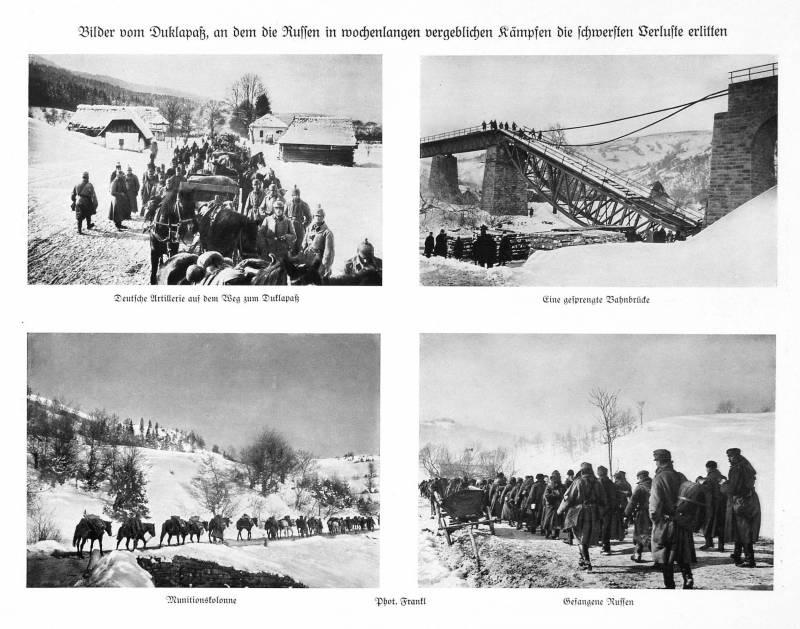
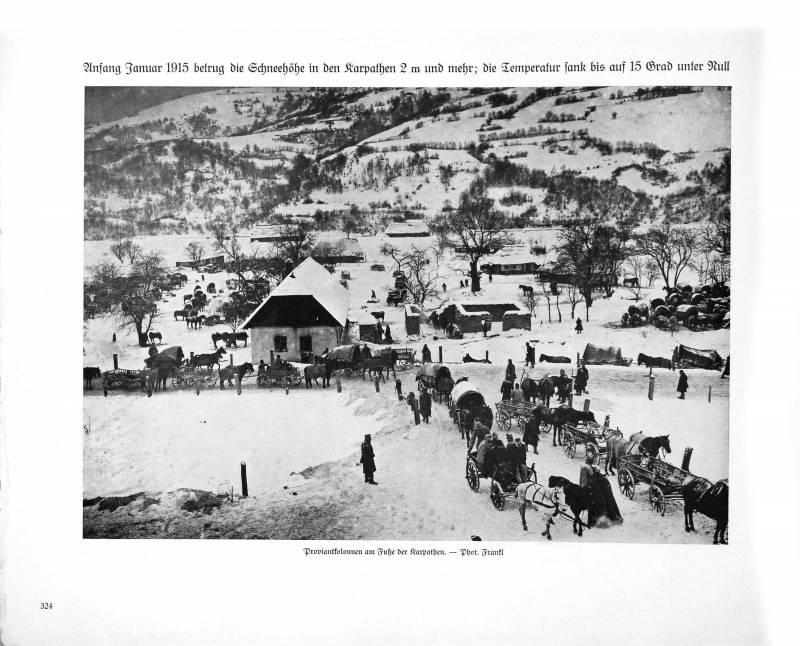
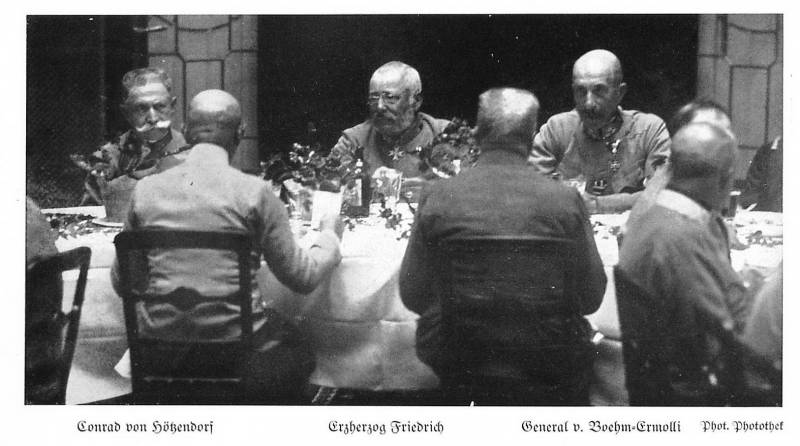
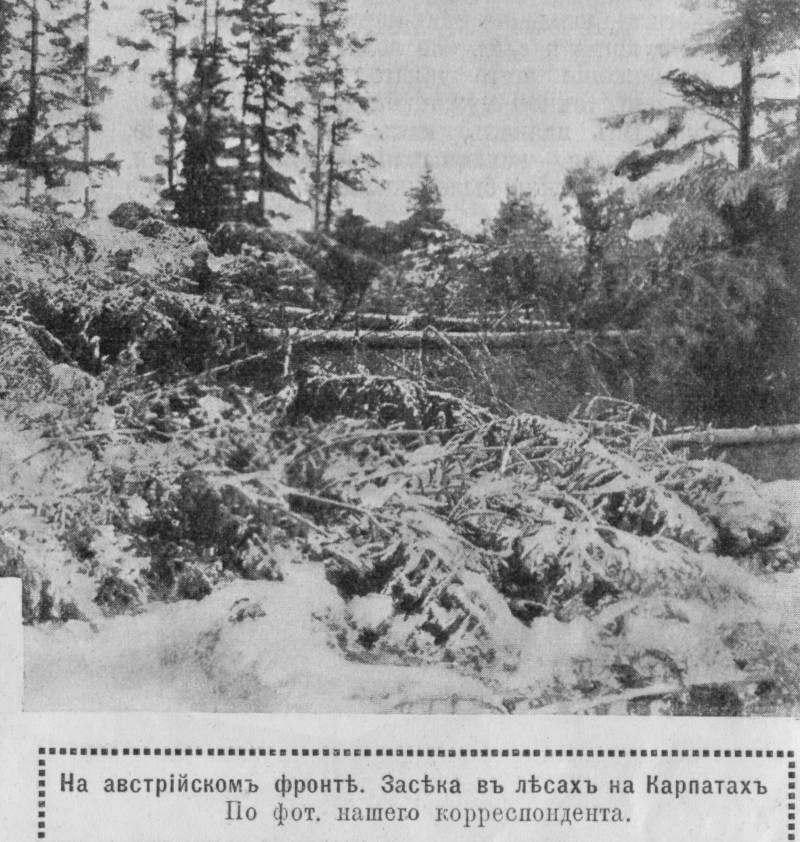

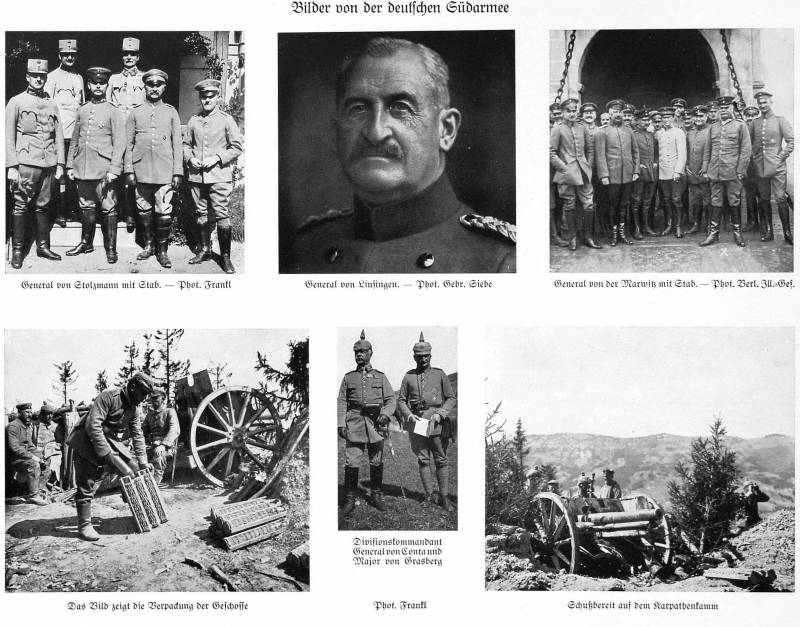
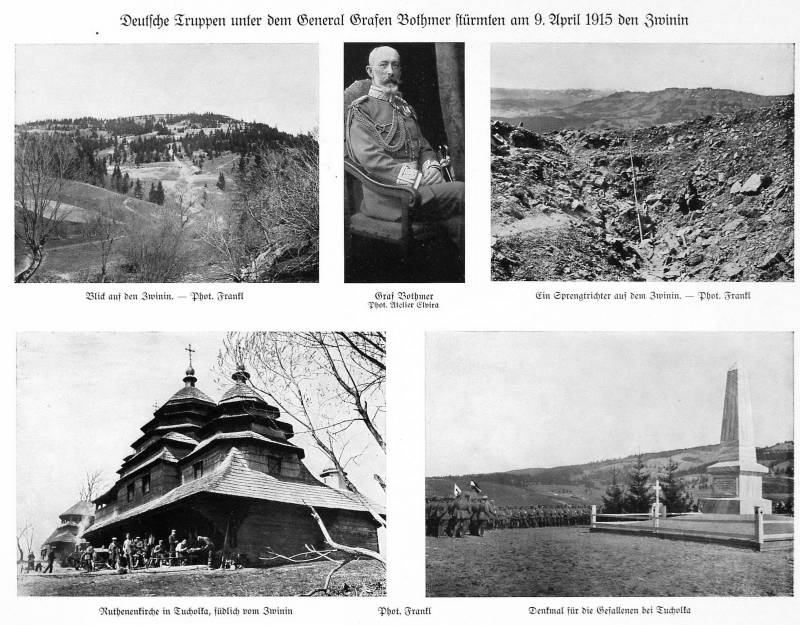
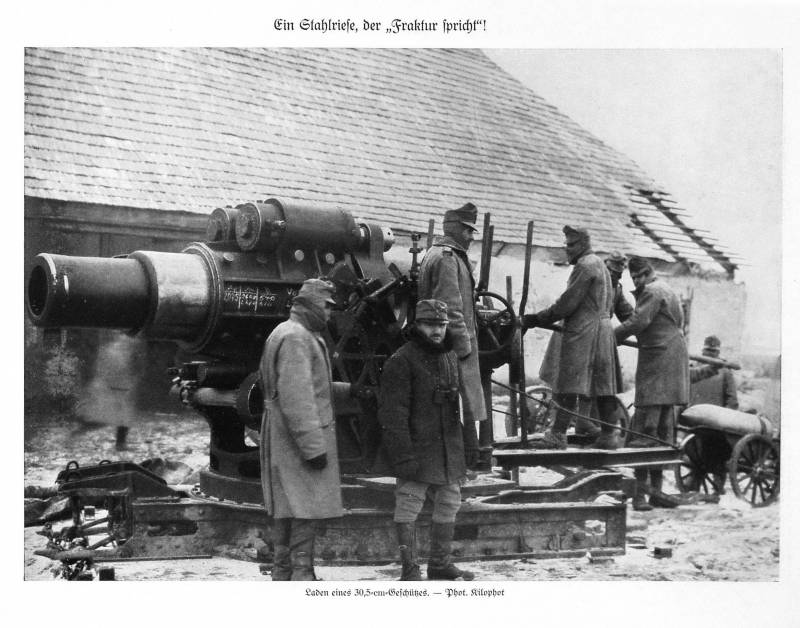
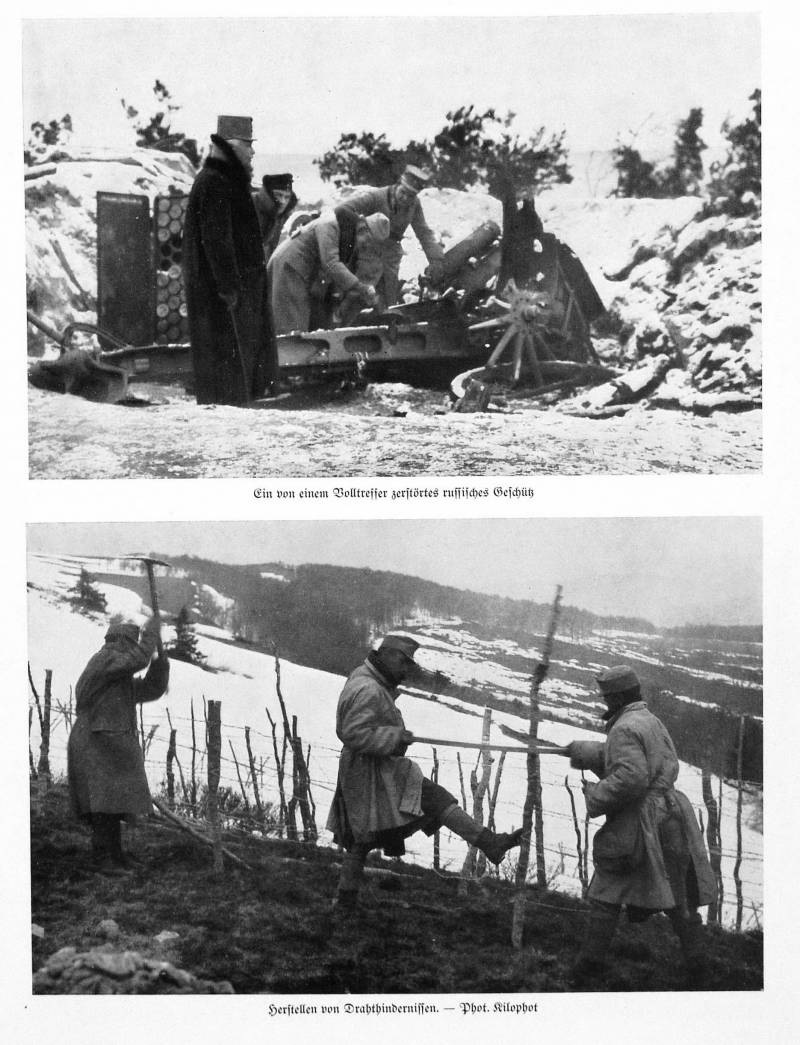
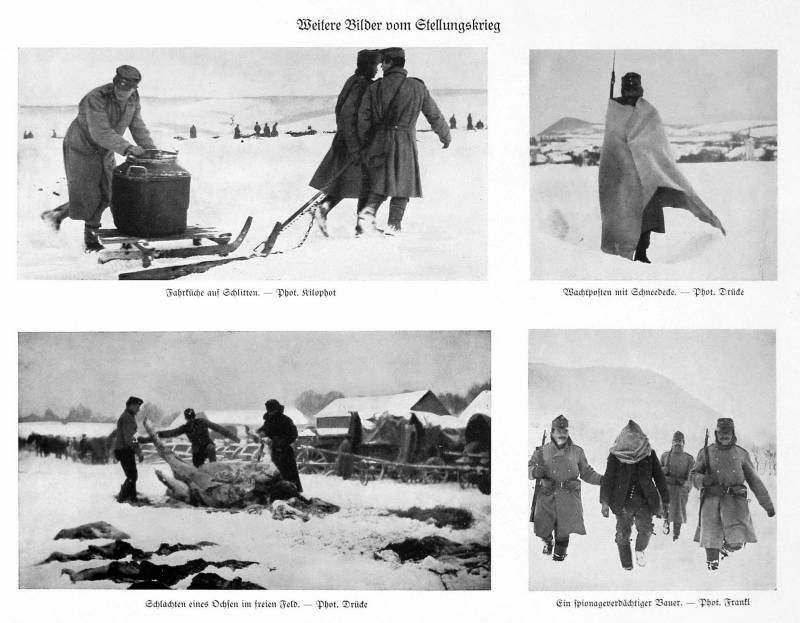
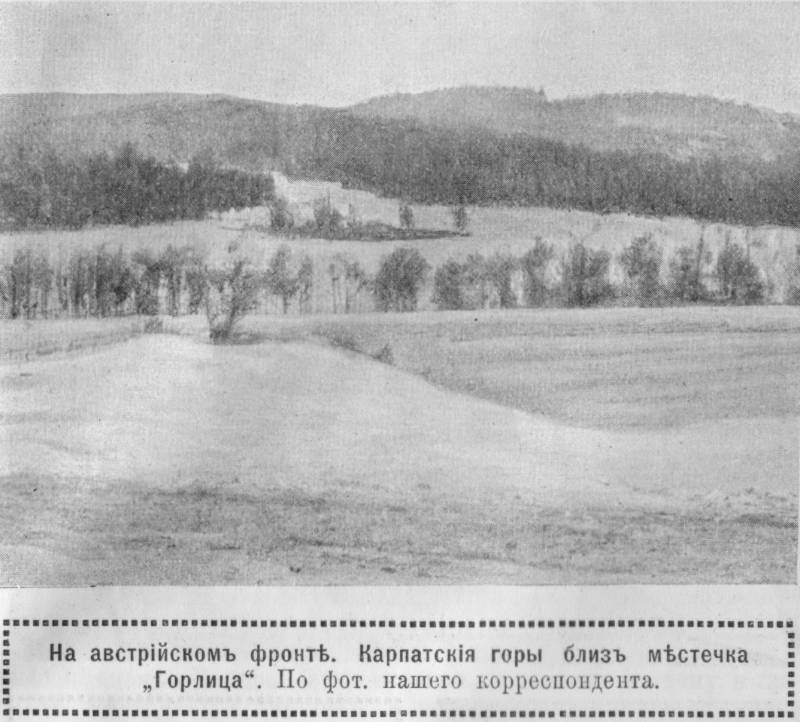
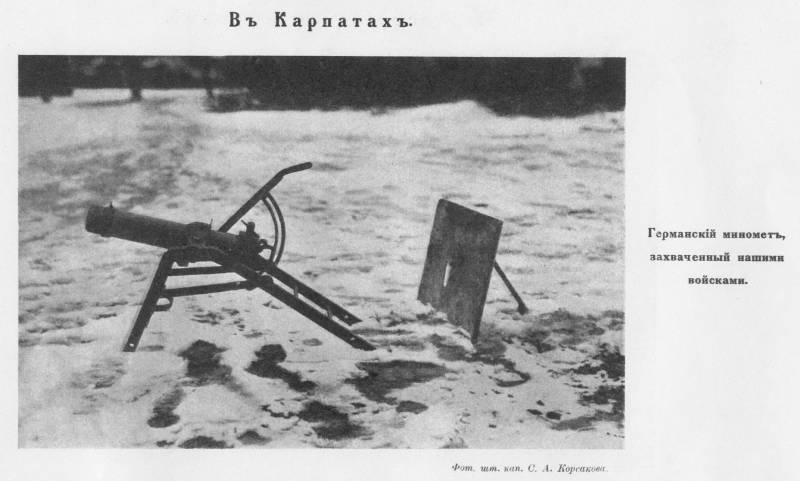
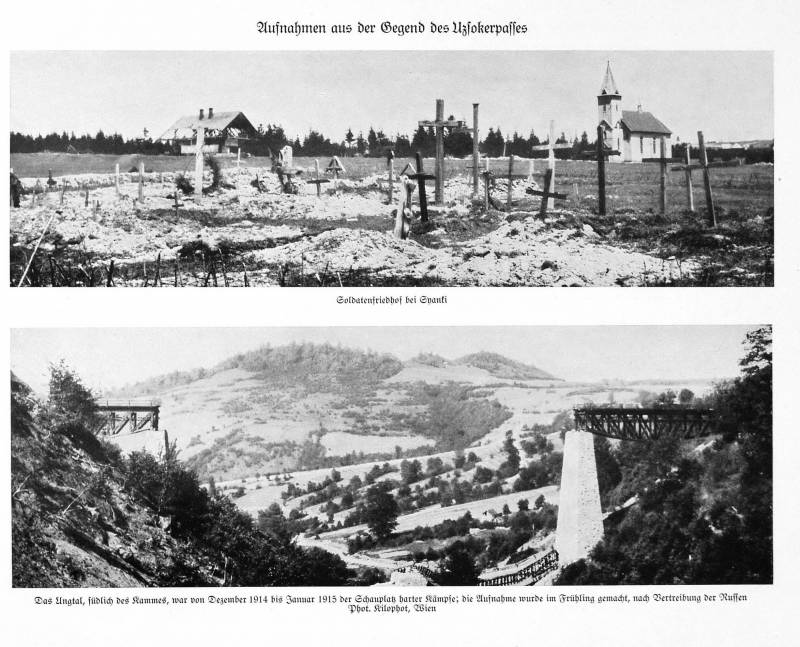
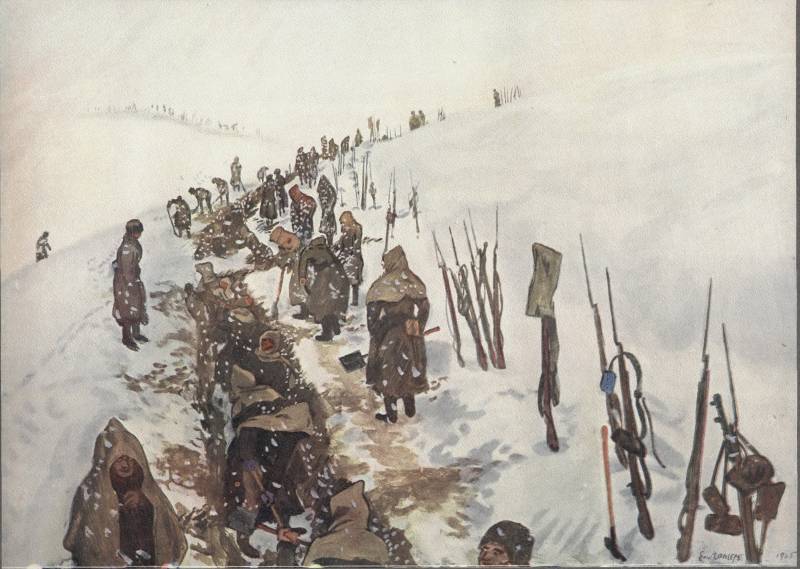
Information